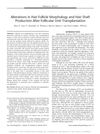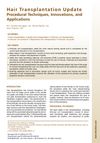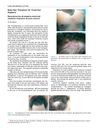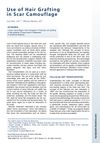Follicular Unit Extraction in Management of Secondary Cicatricial Alopecia
August 2021
in “
Al-Azhar International Medical Journal (Print)
”
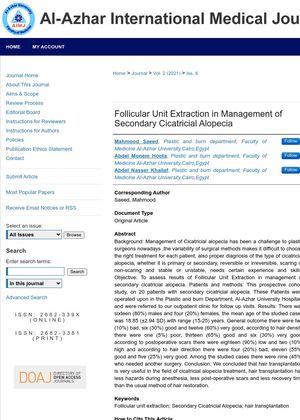
TLDR Hair transplantation is effective for treating cicatricial alopecia with fewer anesthesia risks, scars, and recovery time.
The study "Follicular Unit Extraction in Management of Secondary Cicatricial Alopecia" conducted by Mahmood Saeed, Abdel Monem Hoota, and Abdel Nasser Khallaf from Al-Azhar University, Egypt, involved 20 patients with secondary cicatricial alopecia. The results showed that 80% of the patients were males and 20% were females, with an average age of 18.85 years. The general outcome was rated as bad for 10% of the patients, good for 30%, and very good for 60%. In terms of hair density, 5% had poor results, 65% good, and 30% very good. Postoperative scars were low in 90% of the patients and high in 10%. Hair direction was bad in 20% of the cases, good in 55%, and very good in 25%. 45% of the patients required another surgery. The study concluded that hair transplantation is beneficial for treating cicatricial alopecia, with fewer risks during anesthesia, fewer post-operative scars, and less recovery time than traditional hair restoration methods.
